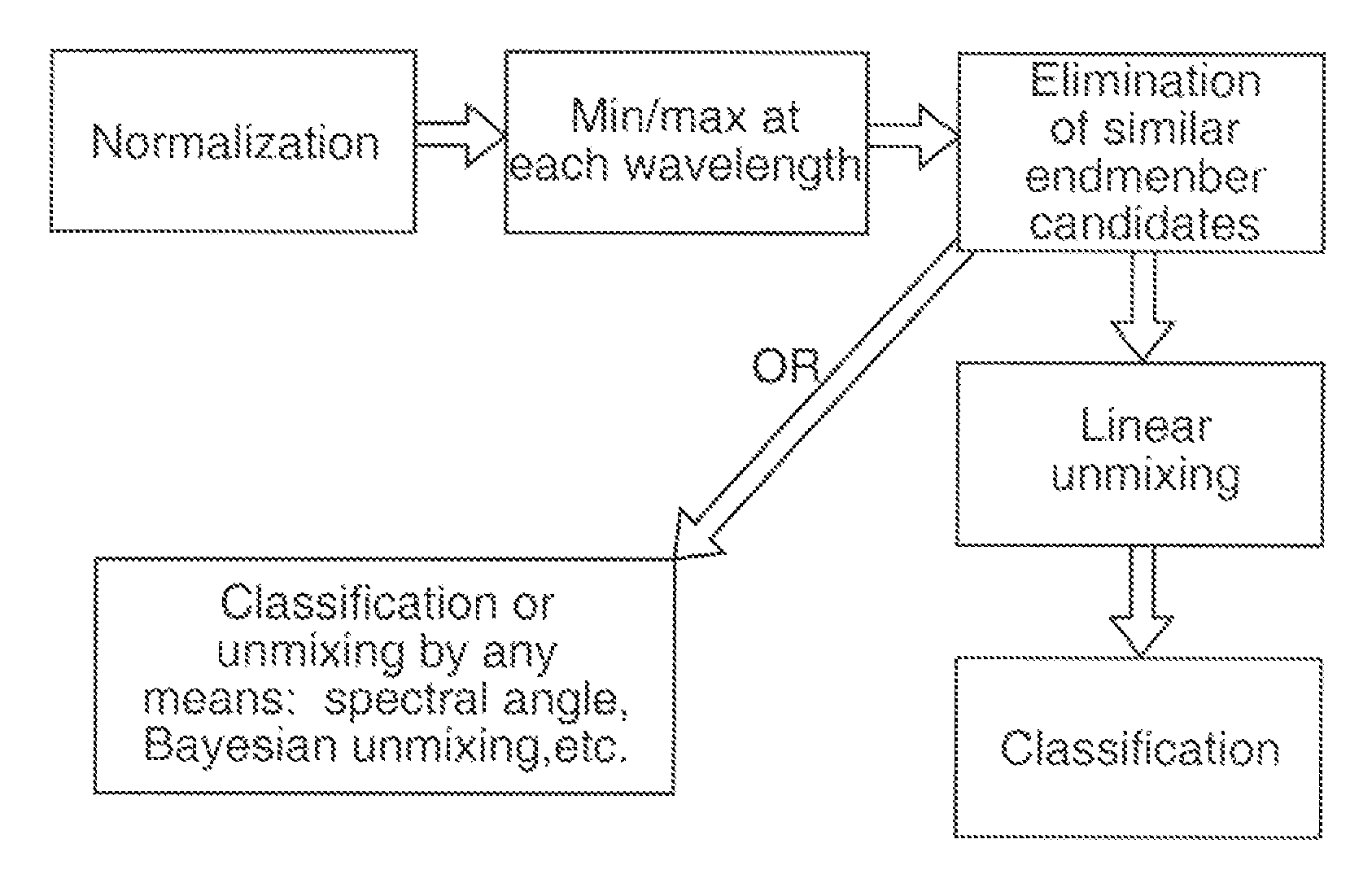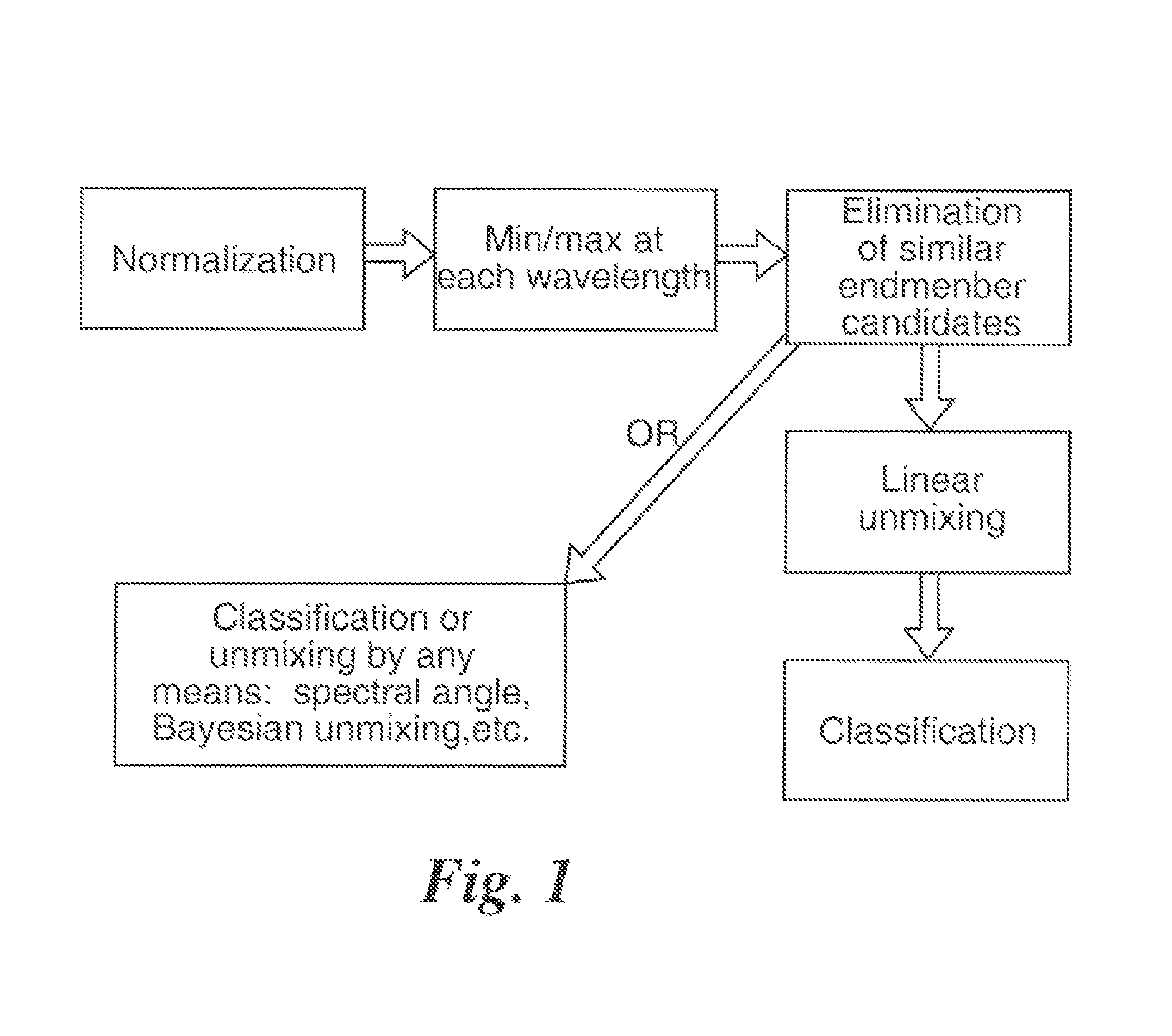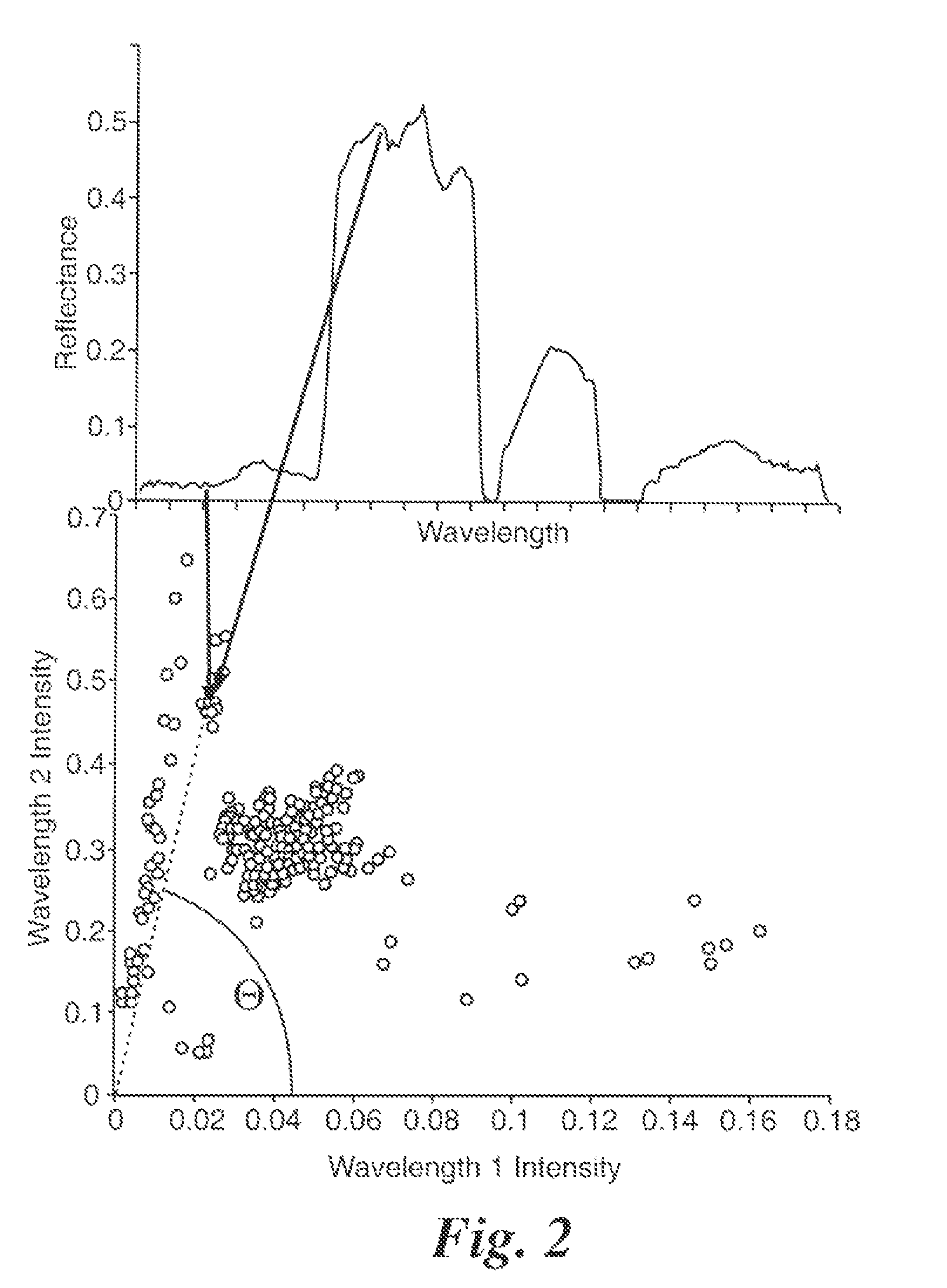Algorithm for rapid endmembers determination (ALRED) in hyperspectral data
a hyperspectral data and endmember technology, applied in the field of spectroscopy, can solve the problems of existing software tools, unable to find physically meaningful endmembers, and unable to accurately predict the physical relevance of endmembers, so as to achieve the effect of useful results and extremely rapid selection process
- Summary
- Abstract
- Description
- Claims
- Application Information
AI Technical Summary
Benefits of technology
Problems solved by technology
Method used
Image
Examples
Embodiment Construction
[0025]The present invention is a system and process that uses an algorithm for rapidly estimating basis spectra (‘endmembers’) for use in analysis of hyperspectral data. The algorithm aims to locate all unique spectral shapes present in the data.
[0026]FIG. 1 is a block diagram of the elements of the process of the present invention. First, all spectra in the data are normalized by area or by vector length. The goal in doing this is to prepare spectra with different total energies for comparison by spectral shape. The algorithm then scans through the hyperspectral data to find maxima and minima at each measured wavelength. The spatial pixels at which maxima and minima were found are then flagged as possible endmembers. The spectra of all flagged pixels are then compared for similarity by calculating correlation coefficients. Spectra with a correlation coefficient above a certain threshold are eliminated as being too similar in shape to other spectra which are kept as endmembers. The ...
PUM
 Login to View More
Login to View More Abstract
Description
Claims
Application Information
 Login to View More
Login to View More - R&D
- Intellectual Property
- Life Sciences
- Materials
- Tech Scout
- Unparalleled Data Quality
- Higher Quality Content
- 60% Fewer Hallucinations
Browse by: Latest US Patents, China's latest patents, Technical Efficacy Thesaurus, Application Domain, Technology Topic, Popular Technical Reports.
© 2025 PatSnap. All rights reserved.Legal|Privacy policy|Modern Slavery Act Transparency Statement|Sitemap|About US| Contact US: help@patsnap.com



